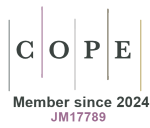Most read articles by the same author(s)
- Alberto Bortolami, Claudio Jommi, Filippo Bresciani, Luca Piccoli, Elisa Sangiorgi, Giovanna Scroccaro, Regional Formularies in Italy: current state and future perspectives , Global and Regional Health Technology Assessment: Vol. 11 No. 1: January-December 2024
- Andrea Marcellusi, Angela Ragonese, Andrea Marinozzi, Alberto Bortolami, Sara Mucherino, Carolina Moreno, Amalia Antenori, Matteo Ferrario, Claudia Simonelli, Matteo Zanuzzi, Marco Cicoira, Ruggero Lasala, Francesco Russoniello, Francesco Attanasio, Caterina Donati, Chiara Roni, Fabrizio Gemmi, Francesco Saverio Mennini, Pierluigi Russo, Giovanna Scroccaro, PierLuigi Canonico, Good practices for the development of budget impact models at regional level , Global and Regional Health Technology Assessment: Vol. 10 No. 1 (2023): January-December 2023
- Federico Villa, Claudio Jommi, Armando Genazzani, Sara Antignani, Simona Montilla, Mario Melazzini, Early access to the market: from the conditional approvals of the EMA to the specific contractual agreements of AIFA , Global and Regional Health Technology Assessment: Vol. 5 No. 1 (2018): January-December 2018
- Claudio Jommi, Giovanni Apolone, Giovanna Scroccaro, Valentina Acciai, Antonio Addis, Andrea Ardizzoni, Renato Bernardini, Alberto Bortolami, Alessia Brigido, Giuliano Buzzetti, Pier Luigi Canonico, Francesca Caprari, Stefano Centanni, Chiara Cernetti, Americo Cicchetti, Giorgio Corsico, Francesco Damele, Filippo De Braud, Sara Manurita, Francesco Saverio Mennini, Irene Olivi, Federica Parretta, Lara Pippo, Stefania Pulimeno, Massimo Riccaboni, Giuseppe Rossi, Cecilia Saleri, Alessandra Sinibaldi, Federico Spandonaro, Cristian Stefenoni, Elena Visentin, Pierluigi Viale, Giuseppina Zapparelli, Patrizia Popoli, Drugs price and reimbursement regulation: comparators, endpoints and role of the cost-effectiveness , Global and Regional Health Technology Assessment: Vol. 9 No. 1 (2022): January-December 2022
- Giovanni Corrao, Giovanni Alquati, Giovanni Apolone, Andrea Ardizzoni, Giuliano Buzzetti, Giorgio W. Canonica, Pierfranco Conte, Elisa Crovato, Francesco Damele, Carlo La Vecchia, Aldo P. Maggioni, Alberto Mantovani, Michele Marangi, Walter Marrocco, Andrea Messori, Alessandro Padovani, Alessandro Rambaldi, Walter Ricciardi, Francesco Ripa di Meana, Federico Spandonaro, Valeria Tozzi, Giuseppe Mancia, Real-world data: how they can help to improve quality of care , Global and Regional Health Technology Assessment: Vol. 8 No. 1 (2021): January-December 2021
- Massimo Medaglia, Giuliano Buzzetti, Marco Cossolo, Paola Deambrosis, Giovanna Scroccaro, The future of drugs distribution in the National Health System , Global and Regional Health Technology Assessment: Vol. 11 No. 1: January-December 2024
- Claudio Jommi, Francesca Patarnello, Cosetta Bianchi, Giuliano Buzzetti, Assessment of innovativeness, and price and reimbursement negotiation of medicines: recommendations of an expert panel , Global and Regional Health Technology Assessment: Vol. 11 No. 1: January-December 2024
- Anna Maria Marata, Walter Marrocco, Emanuela Arcangeli, Mattia Battistini, Giuliano Buzzetti, Riccardo Candido, Gianluigi Casadei, Francesco Cattel, Arturo Cavaliere, Agostino Consoli, Giovanni Corrao, Guido Didoni, Mauro Di Gesù, Alberto Giovanzana, Matteo Lenzi, Massimo Medaglia, Marta Meloncelli, Stefano Palcic, Marcello Pani, Francesca Patarnello, Emanuele Pria, Dario Scaduto, Valeria Tozzi, Marco Zibellini, Elisa Crovato, Drugs territorialization in the era of PNRR: perspectives, opportunities and considerations from a panel of experts , Global and Regional Health Technology Assessment: Vol. 9 No. 1 (2022): January-December 2022
- Giovanna Scroccaro , Luca Piccoli , Giacomo Vitturi, Maria Cristina Carena, Gianfranco Valenzano, Regional tools for the governance of prescribing behaviour and pharmaceutical spending: from literature to concrete experiences and prospects for change , Global and Regional Health Technology Assessment: Vol. 12 No. 1 (2025): January-December 2025
- Patrizia Berto, Silvano Adami, Costantino Botsios, Valentina Fantelli, Anna Maria Grion, Francesca Ometto, Leonardo Punzi, Chiara Roni, Giovanna Scroccaro, Real World Data use and Applications in the Integrated Management of Rheumatic Disease , Global and Regional Health Technology Assessment: Vol. 2 No. 3 (2015): September-December 2015









